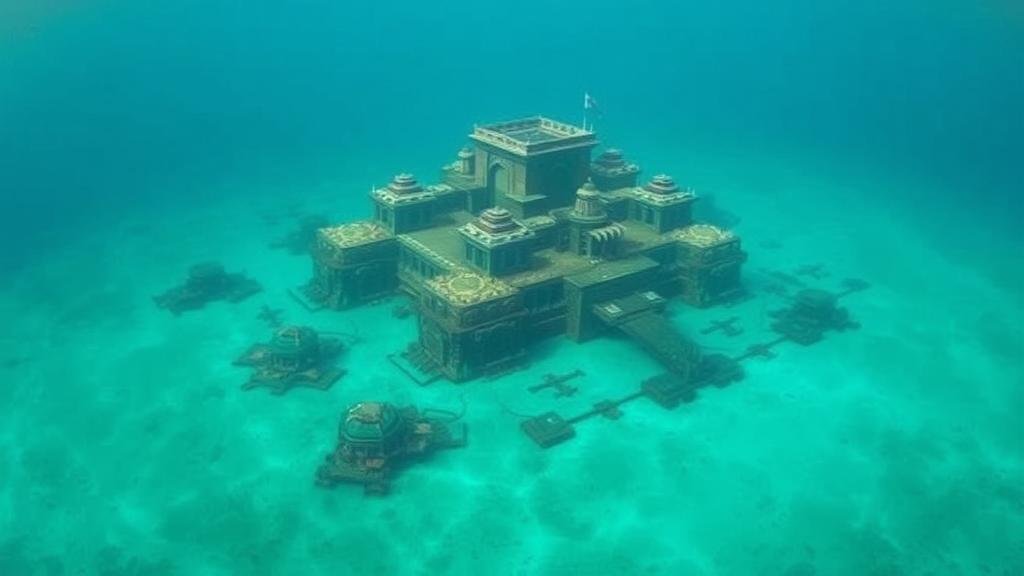Investigating the existence of a submerged city in the South China Sea linked to ancient lore.
Investigating the Existence of a Submerged City in the South China Sea Linked to Ancient Lore
The South China Sea, a vast and contested body of water, is not only rich in biodiversity but also steeped in folklore and legends. Among the most intriguing tales is that of a submerged city, often referred to as Yonaguni or Kong Kong, which supposedly lies beneath its waves. This article delves into the historical and cultural background surrounding this intriguing mystery, examining the evidence and investigating its implications.
Historical Background
The idea of underwater cities is not new. In many cultures, tales of lost lands are common. A prominent example is the lost city of Atlantis, described by Plato over two millennia ago. Similar narratives exist in Asian cultures, notably in Chinese mythology, which speaks of vast, prosperous cities swallowed by the sea. Historical references to such sunken locations often date back to ancient dynasties like the Han and Ming, where maritime trade was prominent.
Geological and Archaeological Evidence
The existence of a submerged city has garnered interest from both geologists and archaeologists. In the late 20th century, underwater structures off the coast of Hainan Island led to speculation that these formations could be the remnants of an ancient civilization. Sonar mapping and underwater drone explorations have revealed various geometric shapes on the seabed, sparking debates about their origins.
One of the most referenced sites is the Yonaguni Monument, located off the coast of Japan, which exhibits flat terraces and steps reminiscent of man-made structures. e formations have fueled discussions about possible connections to lost civilizations in the region, although some researchers attribute them to natural geological processes.
Linking Myth to Reality
Ancient texts and oral traditions recount stories of a land known as Mu, believed by some scholars to be a sunken continent that once thrived in the Pacific. This region, including parts of the South China Sea, is often associated with legends of advanced civilizations that possessed significant technological prowess. The connection between these myths and the submerged city hypothesis prompts serious investigation into whether there is any factual basis for such stories.
Scientific Explorations and Findings
In the quest for truth, various scientific expeditions have been organized to explore the underwater terrain of the South China Sea. For example, in 2018, a team of marine archaeologists conducted comprehensive sonar mapping of the seabed, identifying over 60 potential archaeological sites.
- Acoustic surveys indicated large, flat stone formations.
- Artifacts believed to be remnants of ancient pottery were recovered at certain locations.
While these findings are exciting, skepticism remains within the scientific community. Many experts argue that the natural geological evolution of the earth, including tectonic shifts and erosion, could account for these purported remains, thus cautioning against rushing to conclusions.
Modern Implications
The ongoing search for the submerged city has significant implications for cultural heritage and identity. It poses a complex question about the preservation of ancient civilizations and their narratives in the context of modern geopolitics in the South China Sea, an area rich in contested claims and maritime disputes.
Also, this exploration encourages greater interest in maritime archaeology, which strives to uncover human history lost beneath the waves. combination of advanced technology and traditional explorations may lead to a wider understanding of ancient civilizations along the South China Seas coasts.
Actionable Takeaways
The investigation into the submerged city of the South China Sea is not merely an academic pursuit; it presents opportunities for global collaboration in marine archaeology, environmental awareness, and cultural appreciation. Here are some recommendations for interested parties:
- Engage with local historians: Understanding cultural narratives can provide deeper insights into the relationship between legend and reality.
- Support ongoing research: Advocacy for funding and resources dedicated to underwater exploration can yield valuable findings.
- Promote awareness of maritime heritage: Educating the public on the importance of preserving underwater archaeological sites could help protect these invaluable resources.
The enigma of a submerged city in the South China Sea challenges our understanding of history and archaeology, bridging the gap between myth and reality, and beckoning further exploration and discovery.


